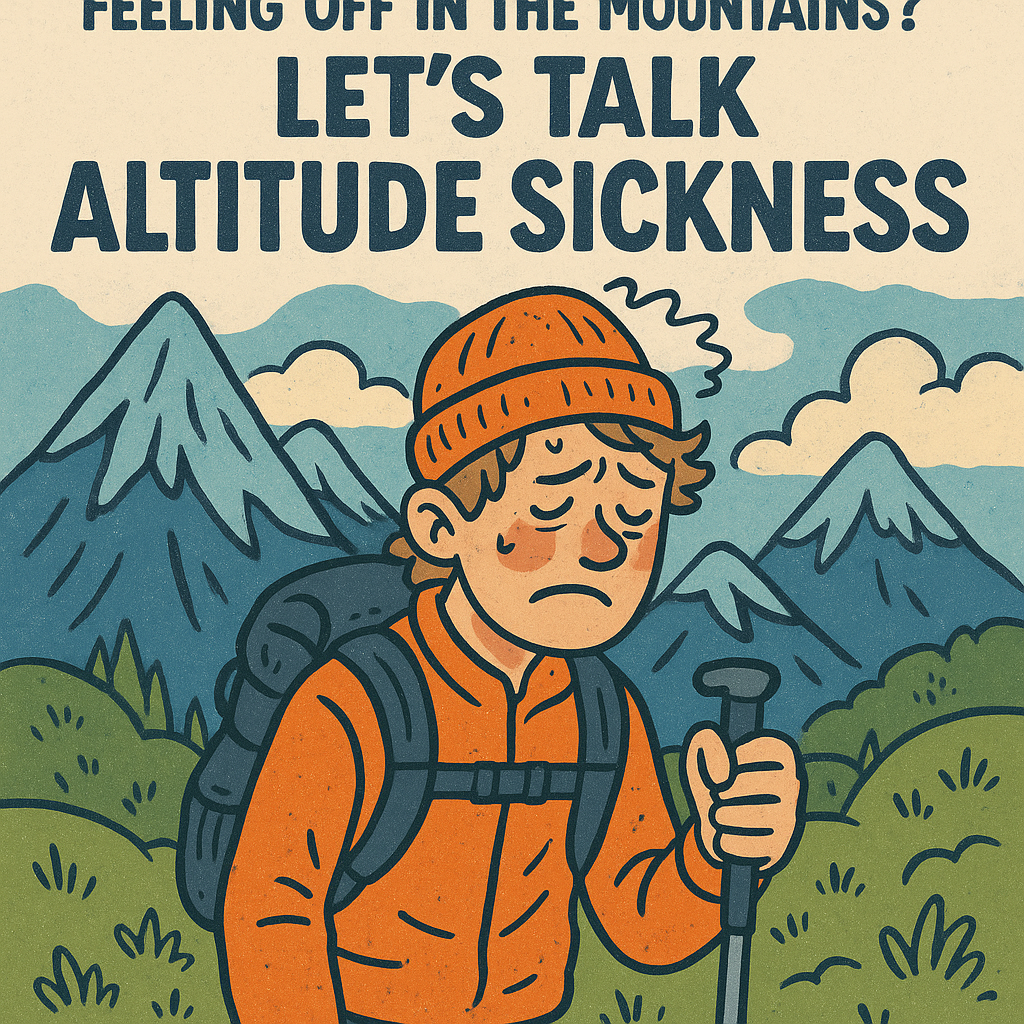🏔️ Feeling Off in the Mountains? Let’s Talk Altitude Sickness

Varrock Street Journal | Natural & Health Sciences Newsletter
🌬️ The Air Up There
Have you ever climbed a mountain or traveled to a high-altitude city and suddenly felt dizzy, short of breath, or nauseous? Maybe you brushed it off as jet lag or fatigue—but chances are, your body was reacting to something very real: altitude sickness.
Whether you’re hiking in the Rockies, skiing in the Alps, or flying into cities like La Paz or Denver, altitude sickness can strike when you least expect it. Today, we’re diving into what it is, how it affects the body, how it’s treated—and even uncovering some fascinating history behind its discovery and study.

📘 What Is Altitude Sickness?
Altitude sickness (also called acute mountain sickness, or AMS) is a group of symptoms that occur when you rapidly ascend to elevations over 8,000 feet (2,400 meters). The higher you go, the thinner the air gets—which means less oxygen is available for your body.
There are three main types of altitude sickness:
- Acute Mountain Sickness (AMS) – the most common, with symptoms like headache, fatigue, dizziness, nausea, and insomnia.
- High Altitude Pulmonary Edema (HAPE) – dangerous fluid build-up in the lungs.
- High Altitude Cerebral Edema (HACE) – life-threatening swelling of the brain.
Why Does It Happen?
When you ascend quickly to a higher altitude, your body doesn’t have enough time to adjust to the lower oxygen levels. This leads to:
- Hypoxia (less oxygen reaching tissues)
- Increased heart rate and breathing
- Blood vessel changes in the lungs and brain
Over time, the body can acclimate, but if the ascent is too fast or the altitude too high, these adaptations can’t keep up—leading to symptoms.
A Brief History of Altitude Research
The effects of altitude were documented as far back as 1500s Peru, when Spanish colonists described headaches and fatigue at high elevations. Later, in the 1800s, mountaineers climbing the Alps and Himalayas documented symptoms more formally.
In 1960, researchers on Mount Everest coined the term “altitude sickness”, and subsequent studies on climbers, soldiers, and pilots helped us understand oxygen physiology and develop treatments.
💊 Treatment and Prevention
Mild altitude sickness usually resolves with rest and acclimatization—the body adjusts to the environment. But for more severe cases or to prevent symptoms:
Prevention Tips:
- Ascend slowly: no more than 1,000–1,500 ft per day after 8,000 ft
- Stay hydrated
- Avoid alcohol and sedatives
- Take it easy the first couple of days
Medications:
- Acetazolamide (Diamox): speeds up acclimatization
- Dexamethasone: reduces brain swelling
- Oxygen therapy or descent: immediate intervention for severe cases
🌍 Why This Matters
Altitude sickness doesn’t just impact elite athletes or mountain climbers—it can affect anyone traveling to high-altitude locations. With the rise of adventure tourism and travel to places like Peru, Nepal, or the Colorado Rockies, knowing how to prevent and treat altitude sickness can make your trip safer and more enjoyable.
🔭 Spotlight on Future Applications
Research on altitude sickness has led to better understanding of hypoxia, which plays a role in stroke, heart disease, and even cancer. It’s also critical for designing space travel environments and developing high-altitude performance protocols for military and emergency responders.
Here is an animated video discussing this!
❓ Did You Know?
The highest permanent settlement in the world is La Rinconada, Peru at over 16,700 feet—and most residents have developed natural adaptations like larger lungs and more red blood cells over generations!
9. 💭 Reflection Questions
- Have you ever experienced altitude sickness, or do you know someone who has?
- Why might some people be more prone to altitude sickness than others?
- Should more tourists be educated about the dangers of rapid ascents?
🔗 References (APA Style)
- Basnyat, B., & Murdoch, D. R. (2003). High-altitude illness. The Lancet, 361(9373), 1967-1974. https://doi.org/10.1016/S0140-6736(03)13591-X
- Hackett, P. H., & Roach, R. C. (2001). High-altitude illness. New England Journal of Medicine, 345(2), 107-114. https://doi.org/10.1056/NEJM200107123450206
- Center for Disease Control and Prevention (CDC). (2023). Traveling to high altitudes. https://www.cdc.gov/travel/page/travel-to-high-altitudes
- West, J. B. (1999). High life: A history of high-altitude physiology and medicine. Oxford University Press.
📣 Stay Connected
📸 Instagram: @thevarrockstreetjournal
📽️ TikTok: @varrock.street.jo
🌐 Website: www.shadeacademia.com
